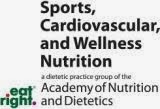During marathon season, fellow
runners ask what they should eat the night before to fuel a long training
run. Most runners automatically assume
the answer is pasta. While pasta is a great choice, it can cause
gastrointestinal troubles for some, and it can simply get old and boring for
others.
Runners with Celiac disease simply
cannot eat a wheat-based pasta (regular pasta made with wheat contains gluten,
a wheat protein that triggers digestive problems in Celiac disease patients). Runners suffering from non-Celiac gluten
sensitivity also may find pasta to be a poor pre-race choice. Runners in neither of these categories simply
may be eating too much pasta, or choosing a sauce that may cause gastrointestinal
issues. Cream sauces (think penne a la
vodka) are heavy in fat and digest slowly, which can cause race day stomach
issues. A simple marinara sauce, while having little or no fat, may be too acidic and cause acid reflux.
 |
| Picture: Thinkstock Source: National Features |
Training season is the best time to
test-drive your pre-race meal vs. trying something new the night before race
day. Why not try some of these carbohydrate-rich alternatives to pasta the
night before a long run:
·
White rice: Cook up a bowl of white rice, toss with
vegetables, and a tablespoon of teriyaki or soy sauce for flavor. Or, eat rice as
a side dish with a lean protein like chicken or fish.
·
Sweet potato: Cut sweet potato into
pieces, cut up an apple, grab some golden raisins, toss them all together in a
light drizzle of olive oil, season with paprika and garlic powder, and bake.
·
Breakfast for dinner: What about a
batch of blueberry pancakes? Cut back on sugar and use a small spread of jam on
the pancakes with some peanut butter vs. traditional pancake syrup. Even a bagel with jam and peanut butter for
those lazy, no-cook nights.
·
Rice-based pasta: For those with
Celiac disease or a gluten sensitivity, cook up a rice-based (gluten-free) pasta.
As with regular pasta, be careful of your sauce choice. Try tossing it in olive
oil, garlic powder, and parmesan cheese. Or try a balsamic glaze with veggies
mixed in.
·
Healthy pizza: Buy a pre-made thick pizza crust (thick crust = more
carbs). Use a thin layer of pizza sauce, and approximately ½-3/4 cup (depending
on size of crust) of a low-fat shredded mozzarella. Sprinkle whatever toppings
you crave: black olives, broccoli, slices of turkey pepperoni, mushrooms, or
chopped grilled chicken. You may omit
cheese and use only veggies and pizza sauce.
Race training is not just for
logging miles, but for testing out what makes your gut happy. A big bowl of
rice and veggies may be just what you need to power you through your long run,
while another runner may feel best eating a large baked sweet potato and baked
breaded chicken. Fine tune your pre-race fueling during training months and
never try something new the night before or morning of a race.
Alison
Barkman, MS, RD, CDN is an adjunct professor for nutrition undergraduates at
LIU/Post in Brookville, NY. An avid runner and gym rat, she is asked questions
daily about nutrition and exercise. Her love for all things sports nutrition
has driven her to begin a sports nutrition practice in Garden City, NY (Long
Island). She can be reached at AlisonBarkmanNutrition@gmail.com or 516-220-9320.



